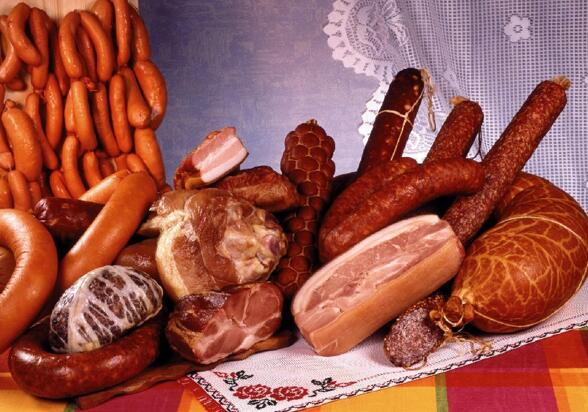Antiseptic Measures for Meat Products Processing-1
1.Effective control in material selection and production
In the processing of low-temperature meat products, material selection is the first step. The initial bacterial number of raw materials determines that it is difficult to control the microorganism in the following processes. A better control of the initial bacterial number can make the growth rate of the microorganism in the breeding period lower and facilitate the control of its growth.
In order to balance the production, many manufacturers use frozen meat. When thawing frozen meat, it is very important to choose a reasonable thawing method and control good environmental sanitation. It is necessary to better control the secondary pollution of raw meat and the propagation of microorganisms.
As we all know, the growth conditions of microorganisms need appropriate temperature, enough nutrition and water. The raw materials for meat products processing have rich nutrients and sufficient water. Once the temperature is appropriate, the microorganisms will propagate rapidly, so that the storability and health safety of meat products are greatly threatened. In the process of meat products processing, the temperature control is mainly to control the internal system of the products, effectively control the microorganisms in the system, ensure that the temperature of the system is always within 2-10 ˚ C in the whole process, so as to inhibit the metabolic activity of microbial growth and reproduction, reduce the enzyme activity and the speed of chemical reaction in the meat products, but the temperature control should not be too low, too low temperature will destroy some meat products The tissue of the product may cause other damages, and the energy consumption is more, and the chemical reaction speed in the meat product is too slow. The temperature control of processing environment should be set around the temperature of meat products in the product system. Generally, the temperature control should be kept within 2-6 ˚ C in the process of curing with long processing links, and that of other processing links should be kept within 15-25 ˚ C.
High temperature heat treatment is one of the safest and most reliable methods for preservation of meat products. A properly designed heat treatment process can not only kill all kinds of microorganisms in meat products, inactivate the activity of enzymes, but also keep the processed meat products with good flavor, color, texture and nutrients. Heat treatment is to use high temperature to kill microorganisms. From the perspective of preservation of meat products, hot processing refers to two temperature categories: sterilization and sterilization.
Sterilization usually refers to the heat treatment operation of heating the center temperature of meat products to 65-75 ℃ at the temperature below 100 ℃. At this temperature, almost all enzymes and microorganisms in meat products are inactivated or killed, but bacterial spores are still alive.
Sterilization refers to the heat treatment operation with the center temperature of meat products exceeding 100 ℃. Its purpose is to kill the spores of bacteria, so as to ensure that the product has a long shelf life under the circulation temperature. However, due to the great damage of sterilization to the quality of meat products, generally low-temperature meat products are not used in the production.
In the process of meat products processing, the control of heating temperature is also the key point of anti-corrosion measures. The residual amount of the total number of bacteria after heat treatment has a direct impact on the degree of product corrosion. In the secondary packaging products, strengthen the control of the secondary pollution of the products, and the secondary sterilization after packaging is also the key control link in the processing of meat products. Such as sausage, barbecue, cellophane ham and other secondary packaging is the best way to operate in the sterile room, strengthen the hygiene requirements of operators, and sterilize the tools used.

